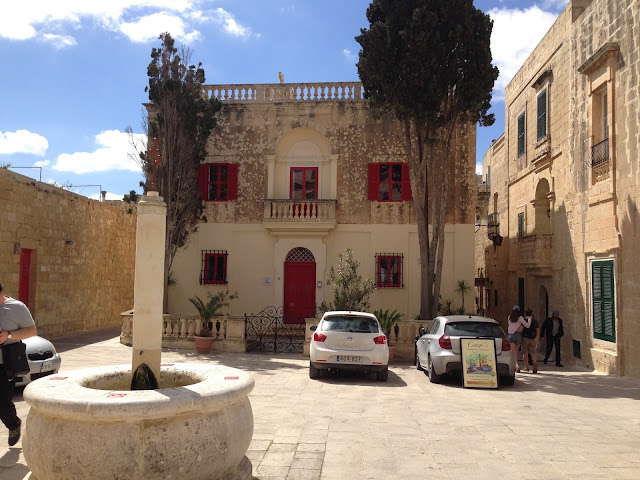Yesterday we took two buses and visited the ancient city of Mdina, situated on a plateau roughly in the centre of the island. I wish we had done this first, rather than last.
When you look out over the huge fortified city walls to see Valletta (the entire expanse on the horizon) so close, you realise how small the island really is. The long and tedious bus rides we have had through traffic in the built-up areas and to the island of Gozo give a bit of a false impression.
This was our first glimpse of some horticulture, too. The EU classifies Malta as 95% urban and horticultural land does not necessarily have a residence attached. But the land is very stony, with stone used to construct walls between fields, so the fields are quite small compared to what we are used to.
But back to Mdina. Mdina was first settled in the eighth century BC by the Phoenicians. It was taken over by the Romans in 218 BC. It is said St. Paul the Apostle was shipwrecked on Malta in 60 AD and spent several years in Mdina. After the fall of the Western Roman Empire, Mdina contracted to be virtually uninhabited until 1048 when it was resettled by an Arab muslim community and its slaves. This is when it took the name Mdina, from the Arabic.
Next it was taken by King Roger the First of Sicily in 1100 AD. By the fourteenth century the population of Malta was around 10,000 and was now under Spanish rule.
The Order of St John took over Malta in 1530 and maintained control until Napoleon Bonaparte seized the country in 1798 surrounding it to the English two years later.
This is St. Paul's Cathedral inside the city walls of Mdina. It is dedicated to St. Paul the Apostle. The cathedral was founded in the 12th century, and according to tradition it stands on the site where Roman governor Publius met St. Paul following his shipwreck on Malta.
The original cathedral was severely damaged in the 1693 Sicily earthquake, so it was dismantled and rebuilt in the Baroque style between 1696 and 1705. The cathedral is the seat of the Roman Catholic Archdiocese of Malta, and since the 19th century this function has been shared with St. John's Co-Cathedral in Valletta.
Very baroque!
Most of the cathedral's floor floor consists of inlaid tombstones or commemorative marble slabs. Apparently the remains of several bishops and canons, as well as laymen from noble families, are buried here.
People still reside inside the walled city, in fact it is very upmarket real estate. Around 860,000 euros for a 3 bedroom restored property - $1.25m AUD.
We had a drink on the sunny part of this terrace with this lovely, colourful donkey, before heading back to the bus stop.










��this was really good to read.��Hope u enjoy midinala-something. From Jack��
ReplyDeletelooks great
ReplyDelete